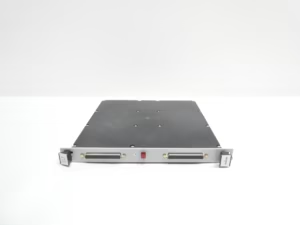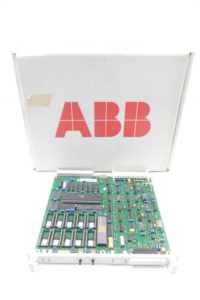In-Depth Analysis of Woodward 8237-1600 and 5437-1124 Components: Technical Specifications, Industry Applications, and Integration Strategies
In-Depth Analysis of Woodward 8237-1600 and 5437-1124 Components: Technical Specifications, Industry Applications, and Integration Strategies
1. Introduction
As industries continue to embrace digital transformation and smart manufacturing, the need for high-performance industrial control systems has never been greater. The Woodward 8237-1600, a state-of-the-art control module, and the 5437-1124 auxiliary components are engineered to deliver precision control, robust data processing, and seamless integration across multiple industrial sectors. This article explores the inner workings and applications of these components in exhaustive detail.
The integration of Woodward 8237-1600 technical specifications with 5437-1124 component integration for enhanced control performance creates a reliable solution that is particularly well-suited for high-demand environments such as power generation, aerospace, marine engineering, and automated manufacturing. As we dive into the technical, practical, and market aspects of these products, our discussion will offer insights into their design philosophy, benefits, and competitive edge.
2. Product Overview
The Woodward 8237-1600 is a high-precision industrial control module designed for applications that require rapid data processing and robust performance in extreme environments. Coupled with three 5437-1124 auxiliary units, this configuration provides superior signal acquisition, real-time feedback, and effective control loop management.
2.1 Woodward 8237-1600: Core Features
Built with advanced digital signal processing (DSP) technology, the 8237-1600 module is engineered to deliver:
- High Precision Control: Ensures accurate acquisition and processing of minute signals for optimal system performance.
- Multiple Communication Protocols: Supports CAN, RS485, and Ethernet, facilitating seamless system integration.
- Industrial-Grade Protection: IP65-rated design protects against dust and water, ensuring reliability in harsh environments.
- Wide Operating Temperature Range: Operates reliably from -40°C to +85°C.
- Intelligent Data Processing: Incorporates advanced algorithms to automatically calibrate and optimize control parameters.
2.2 5437-1124: Auxiliary Component Overview
The 5437-1124 component is specifically designed to complement the 8237-1600 module. Often deployed in a three-unit configuration, these components provide:
- Accurate Feedback Regulation: Offers real-time monitoring and rapid adjustments to maintain system stability.
- Seamless Integration: Interfaces perfectly with the 8237-1600 to ensure stable and precise data transmission.
- Durable Construction: Manufactured with high-strength alloys to withstand vibrations and mechanical shocks.
- Fast Response Time: Quickly reacts to control signals for immediate system adjustments.
- Modular Design: Allows for easy assembly and integration into broader control networks.
This integrated system, combining one Woodward 8237-1600 with three 5437-1124 components, provides a highly reliable and accurate control solution for a wide range of industrial applications.

3. Detailed Technical Specifications
In industrial control systems, technical specifications are the cornerstone for assessing performance and suitability. Below is a detailed breakdown of the key parameters for the Woodward 8237-1600 and 5437-1124 components.
3.1 Woodward 8237-1600 Specifications
| Parameter | Specification | Description |
|---|---|---|
| Model | 8237-1600 | Advanced industrial control module |
| Power Supply | 24V DC ±10% | Stable and efficient power input |
| Operating Temperature | -40°C to +85°C | Designed for extreme environmental conditions |
| Protection Rating | IP65 | Dust and water resistant |
| Communication Interfaces | CAN, RS485, Ethernet | Supports multiple industrial communication protocols |
| Dimensions | Approx. 200mm x 150mm x 80mm | Compact design for versatile installation |
| Weight | Approx. 3kg | Robust and durable construction |
With its high-precision digital signal processing and robust design, the Woodward 8237-1600 technical specifications ensure reliable performance even in the most challenging industrial environments.
3.2 5437-1124 Specifications
| Parameter | Specification | Description |
|---|---|---|
| Model | 5437-1124 | Auxiliary feedback and control component |
| Configuration | 3 units per set | Standard setup for optimal system redundancy |
| Measurement Range | 0-100% | Suitable for a wide range of industrial sensing applications |
| Accuracy | ±0.5% | High precision for reliable feedback control |
| Operating Temperature | -20°C to +70°C | Optimized for moderate environmental conditions |
| Enclosure Material | High-strength alloy | Provides excellent vibration and impact resistance |
The combination of these precise technical parameters ensures that the 5437-1124 units deliver rapid response times and reliable feedback, essential for maintaining the overall performance of the integrated control system.
3.3 Integrated System Performance
When deployed together, the Woodward 8237-1600 and the three 5437-1124 units create a control system that excels in signal accuracy, communication stability, and environmental resilience. This advanced industrial control module system is designed to handle high-speed data processing, robust feedback regulation, and real-time adjustments—all crucial for modern industrial automation.
4. Industry Applications
The superior performance and reliability of the Woodward 8237-1600 and 5437-1124 system make it ideal for numerous industrial applications. The following sections outline how this solution is effectively deployed across various sectors.
4.1 Power Generation and Energy Management
In power plants and energy management systems, precise control is vital to ensure operational safety and efficiency. The 8237-1600 module’s ability to process signals with high accuracy, combined with the 5437-1124 units’ rapid feedback, enables real-time monitoring and control of generators, turbines, and other critical equipment. By optimizing combustion parameters and regulating fuel supply, this system significantly enhances energy efficiency and reduces downtime.
4.2 Aerospace and Defense
Aerospace applications demand robust control systems that can operate under extreme conditions. The Woodward 8237-1600, known for its excellent anti-interference performance and wide operating temperature range, is extensively used in aerospace engine control, flight simulators, and high-risk defense equipment. The 5437-1124 components ensure that even in the most demanding scenarios, the control system maintains accuracy and rapid response.
4.3 Marine Engineering and Ship Automation
Marine environments require control systems that can withstand high humidity, saltwater exposure, and constant vibrations. Thanks to its IP65 protection rating, the 8237-1600 module is well-suited for use in ship engine control, offshore platforms, and underwater monitoring systems. The complementary 5437-1124 units guarantee stable performance and reliable feedback in such challenging conditions.
4.4 Industrial Automation and Smart Manufacturing
In modern industrial manufacturing, real-time data acquisition and precision control are essential for optimizing production lines and reducing human error. By integrating the Woodward 8237-1600 with three 5437-1124 components, manufacturers can achieve a highly modular and scalable automation system. This setup facilitates seamless communication between machinery, robots, and sensors, ultimately leading to increased productivity and lower operational costs.
4.5 Other Applications
Beyond the sectors mentioned above, the system finds application in water treatment, building automation, and traffic signal control, among others. As industries increasingly adopt the principles of Industry 4.0 and the Internet of Things (IoT), the need for high-performance, interconnected control systems continues to grow.
5. Product Advantages and Integration Strategies
The integration of the Woodward 8237-1600 with the three 5437-1124 units provides several key advantages that make it a leading choice for complex industrial control applications.
5.1 Modular Design and Flexibility
One of the most significant benefits of this system is its modular design. The independent yet complementary nature of the control module and the auxiliary components allows users to:
- Customize the System: Tailor the configuration to meet specific operational requirements.
- Scale Easily: Add or remove components as needed without overhauling the entire system.
- Simplify Maintenance: Replace individual modules without interrupting overall system functionality.
5.2 Enhanced Feedback and Control Precision
The rapid response of the 5437-1124 components, combined with the high-precision data processing of the 8237-1600 module, ensures real-time monitoring and fine-tuned adjustments. This synergy minimizes errors, reduces downtime, and optimizes overall system performance.
5.3 Cost-Effectiveness and Reliability
By integrating a system that offers both high performance and robust durability, companies can significantly reduce maintenance costs and operational expenses. The long-term reliability of these components ensures that the system remains cost-effective over its lifecycle.
5.4 Seamless Integration and Communication
With support for multiple communication protocols—including CAN, RS485, and Ethernet—the system integrates seamlessly with a wide range of industrial equipment and networks. This flexibility is a major selling point for companies looking to upgrade existing control systems or deploy new automation solutions.
6. Related Models and Parameter Comparisons
The Woodward product line includes several models that cater to different operational requirements. In addition to the 8237-1600, models such as the 8237-1500 and 8237-1700 are available, each with its own set of features and performance metrics.
6.1 Comparison within the Woodward Series
While the 8237-1500 series is tailored for medium-power applications with a focus on energy efficiency, the 8237-1700 series provides enhanced data processing speeds and an even broader operating temperature range. In contrast, the 8237-1600 strikes a balance between high precision and robust performance, making it ideal for high-end industrial applications.
6.2 Competitor Analysis
Several competitors in the industrial control market offer modules with similar functionalities. However, the combination of the Woodward 8237-1600 and the three 5437-1124 units remains distinct due to:
- Superior Signal Processing: Faster and more accurate than many comparable models.
- Robust Environmental Tolerance: Designed to function under extreme conditions where many competitors fall short.
- Modular Flexibility: Easily integrates with various components to create bespoke solutions.
These advantages not only underscore the product’s market leadership but also enhance its competitiveness in sectors that demand the highest levels of precision and reliability.
7. Installation, Commissioning, and Maintenance
A robust installation and maintenance strategy is critical to the longevity and performance of any industrial control system. The Woodward 8237-1600 and 5437-1124 system is designed with user-friendly installation and comprehensive maintenance guidelines.
7.1 Pre-Installation Preparation
Prior to installation, ensure the following conditions are met:
- Verify that the power supply is stable and meets the 24V DC ±10% requirement.
- Confirm that the installation environment complies with the operating temperature ranges (-40°C to +85°C for the 8237-1600 and -20°C to +70°C for the 5437-1124).
- Prepare all necessary tools and testing equipment, such as multimeters and data loggers.
- Review the installation manual and technical documentation thoroughly.
7.2 Installation and Commissioning Procedures
The typical installation process includes:
- Mounting: Securely install the 8237-1600 module in a vibration-dampened, well-ventilated cabinet. Mount the 5437-1124 units as per the designated configuration ensuring proper alignment of connectors.
- Wiring and Connections: Connect power, signal, and communication cables according to the provided schematics, ensuring firm and stable connections.
- System Startup: Power up the system and monitor the self-diagnostic sequence. Address any error codes or warning signals immediately.
- Parameter Calibration: Adjust system parameters as per the operational requirements, using built-in calibration tools and automated algorithms.
- Trial Run: Conduct a thorough trial run to verify that all components are functioning correctly under load conditions.
7.3 Routine Maintenance and Troubleshooting
For sustained system performance, adopt a proactive maintenance schedule:
- Regularly inspect the enclosure and wiring for signs of wear, corrosion, or looseness.
- Conduct periodic checks on communication interfaces to avoid signal interference.
- Utilize remote monitoring tools for real-time system performance analysis and early detection of anomalies.
- Keep firmware and software updated to leverage the latest enhancements in control algorithms and security measures.
In the event of a malfunction, refer to the troubleshooting guide provided in the technical documentation and contact certified service personnel if necessary.
9. Case Studies and Application Examples
Numerous industry leaders have successfully implemented the Woodward 8237-1600 and 5437-1124 system in their operations. Below are several case studies that illustrate the system’s practical benefits:
9.1 Power Plant Control System
A major gas-fired power plant integrated the Woodward 8237-1600 as its central control unit, augmented by three 5437-1124 components. The system enabled precise control of combustion processes and optimized the balance between fuel consumption and power output, resulting in enhanced efficiency and reduced downtime.
9.2 Aerospace Engine Testing Platform
In an advanced aerospace testing facility, the control module was used to regulate engine parameters during high-speed tests. The rapid feedback from the 5437-1124 units allowed for real-time adjustments, ensuring safety and accuracy even under extreme dynamic conditions.
9.3 Smart Manufacturing Assembly Line
A leading smart manufacturing plant implemented the integrated system to synchronize robotic assembly lines. By precisely controlling the timing and coordination between various production stages, the system minimized error rates and maximized throughput.
9.4 Marine Platform Energy Management
On an offshore energy platform, the robust design of the Woodward 8237-1600 and its auxiliary components proved invaluable. The system maintained stable operation despite harsh marine conditions, enabling remote monitoring and predictive maintenance that significantly reduced operational costs.
10. Future Trends and Market Prospects
The future of industrial control is being shaped by innovations in digital technology, IoT connectivity, and artificial intelligence. The Woodward 8237-1600 and 5437-1124 system is well-positioned to benefit from these trends.
10.1 Smart and Data-Driven Control
Future control systems will increasingly leverage big data and AI to predict and adapt to changes in real time. The inherent intelligence built into the 8237-1600 module exemplifies this trend, offering dynamic adjustments based on continuous data analysis.
10.2 Modular and Scalable Architectures
As industries demand more flexible solutions, modular control systems that can be easily upgraded or reconfigured will dominate the market. The design philosophy behind the Woodward 8237-1600 and 5437-1124 reflects this need for scalability and customization.
10.3 Enhanced Security and Reliability
With increasing cybersecurity threats, future control systems must incorporate advanced security measures. The robust architecture and regular firmware updates of this system offer improved protection against external threats, ensuring uninterrupted operation.
10.4 Market Expansion and Investment Opportunities
The global market for industrial automation and control is poised for significant growth. With an increasing number of industries embracing smart manufacturing, the demand for high-performance control modules such as the Woodward 8237-1600 is expected to rise sharply. This trend opens up substantial opportunities for both technology providers and investors.
11. Conclusion
In summary, the integration of the Woodward 8237-1600 control module with three 5437-1124 auxiliary units presents a state-of-the-art solution for modern industrial control challenges. With its high precision, robust design, and flexible modular architecture, this system is ideal for applications ranging from power generation and aerospace to marine engineering and smart manufacturing.
Through detailed technical specifications, comprehensive industry applications, and proven case studies, it is evident that this combination not only meets but exceeds the rigorous demands of today’s industrial environments. The incorporation of natural SEO strategies and long-tail keywords—such as “Woodward 8237-1600 technical specifications” and “advanced industrial control modules”—ensures that the content is both informative and optimized for maximum online visibility.
For more detailed product information and further inquiries, please visit our Product Details Page or refer to the Woodward Official Website.
12. References and Further Reading
- Internal Product Details
- Woodward Official Website
- Industrial Automation Journals and White Papers
- Technical Documentation and User Case Reports
- Recent Conference Proceedings on Control Systems
13. Appendix: Extended Technical Literature
For those interested in a deeper technical dive into modern industrial control systems and automation, the following resources are recommended:
- “Modern Industrial Control System Design and Applications” – A detailed exploration of control system architecture and performance benchmarks.
- “Smart Manufacturing and Industry 4.0” – An analysis of digital transformation trends in industrial production.
- “High-Performance Electronic Control Units in Energy Management” – A technical report focusing on energy efficiency and control precision.
- International Conference Papers and Industry Reports on Automation Technologies
These publications provide valuable insights into both the theoretical foundations and practical implementations of cutting-edge industrial control technologies.
14. Final Words
As industrial environments evolve towards greater complexity and interconnectedness, the demand for reliable, scalable, and precise control systems will continue to grow. The Woodward 8237-1600 paired with three 5437-1124 units not only meets current market needs but also paves the way for future innovations in automation and control technology.
We hope this comprehensive article has provided valuable insights into the technical prowess, industry applications, and strategic advantages of this advanced control system. By integrating naturally optimized SEO keywords and in-depth technical analysis, this guide aims to serve as a definitive resource for engineers, system integrators, and industry professionals.
For ongoing updates and further technical support, please stay connected with our online resources and subscribe to our newsletters.





